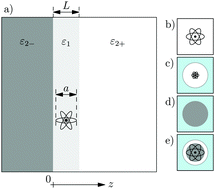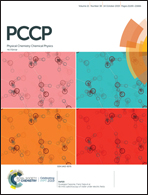Impact of effective polarisability models on the near-field interaction of dissolved greenhouse gases at ice and air interfaces
Abstract
We present a theory for Casimir–Polder forces acting on greenhouse gas molecules dissolved in a thin water film. Such a nano-sized film has been predicted to arise on the surface of melting ice as stabilized by repulsive Lifshitz forces. We show that different models for the effective polarisability of greenhouse gas molecules in water lead to different predictions for how Casimir–Polder forces influence their extractions from the melting ice surface. For instance, in the most intricate model of a finite-sized molecule inside a cavity, dispersion potentials push the methane molecules towards the ice surface whereas the oxygen typically will be attracted towards the closest interface (ice or air). Previous models for effective polarisability had suggested that O2 would also be pushed towards the ice surface. Release of greenhouse gas molecules from the surface of melting ice can potentially influence climate greenhouse effects. With this model, we show that some molecules cannot escape from water as single molecules. Due to the contradiction of the results and the escape dynamics of gases from water, we extended the models to describe bubble filled with several molecules increasing their buoyancy force.

- This article is part of the themed collection: 2019 PCCP HOT Articles


 Please wait while we load your content...
Please wait while we load your content...